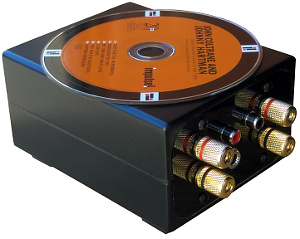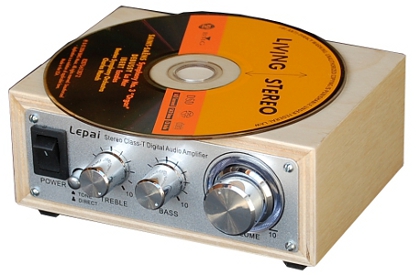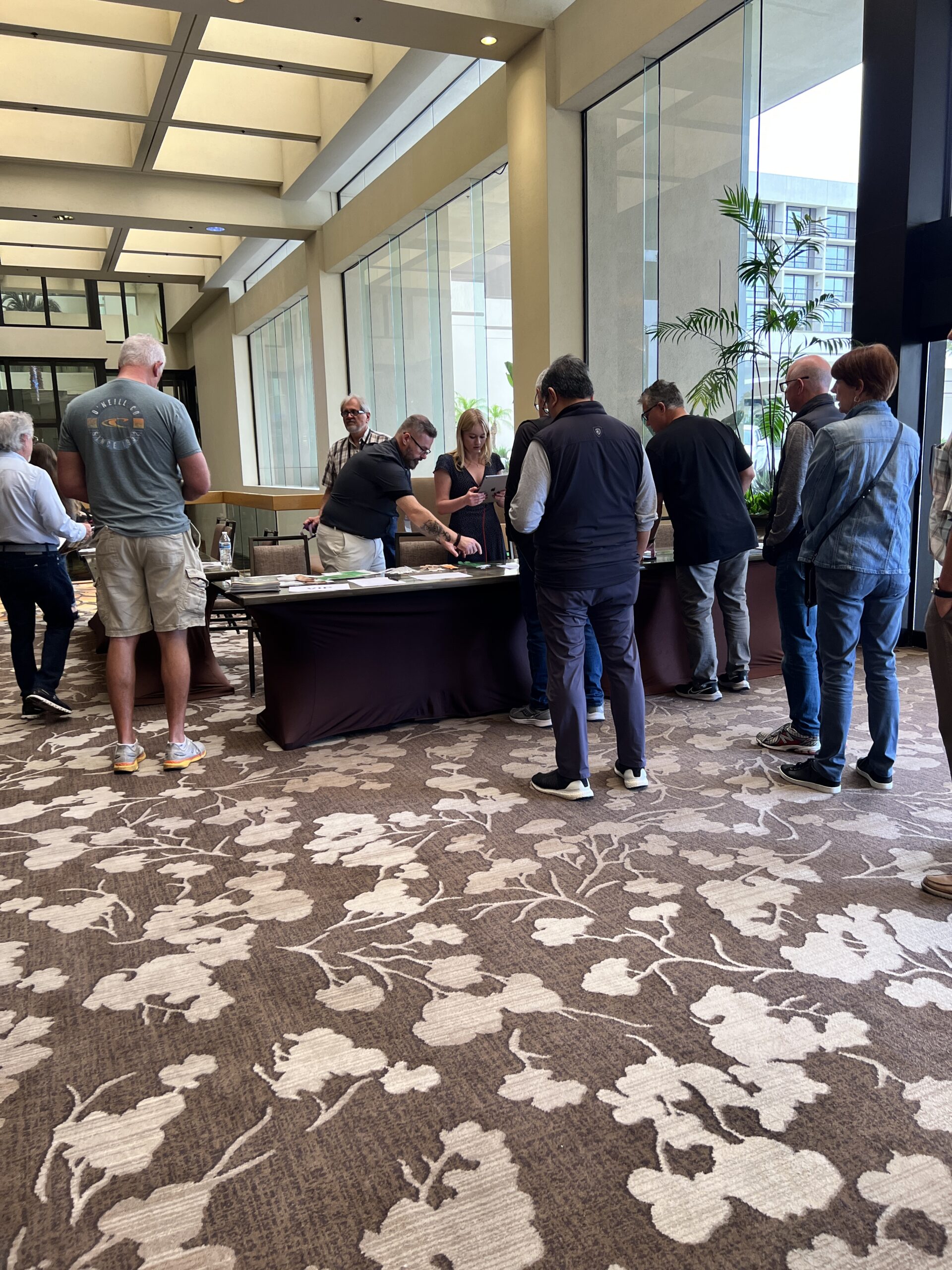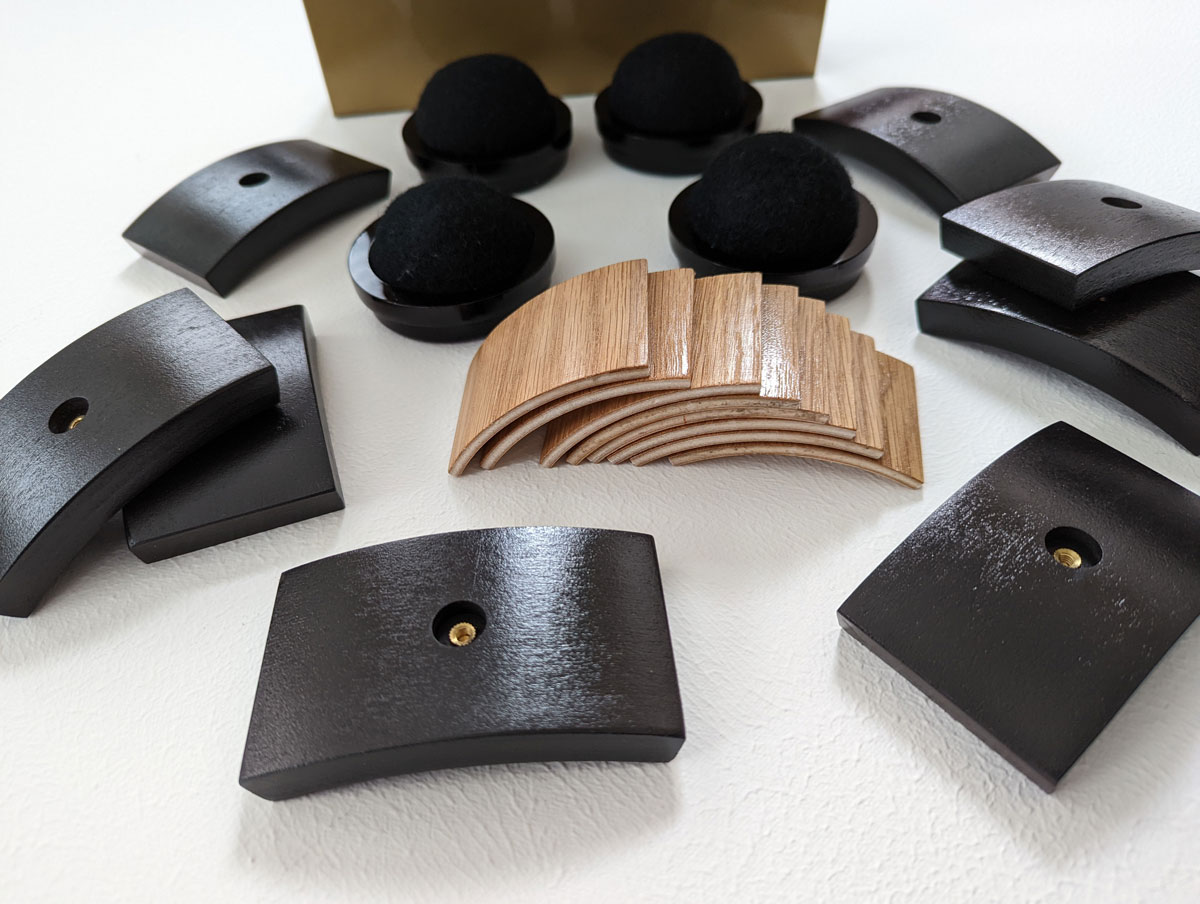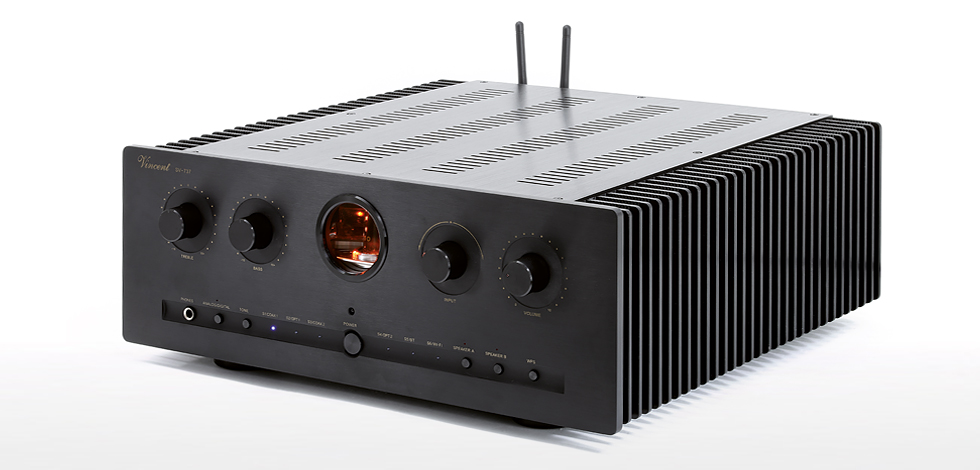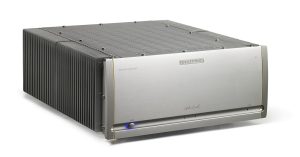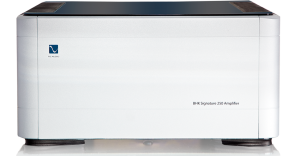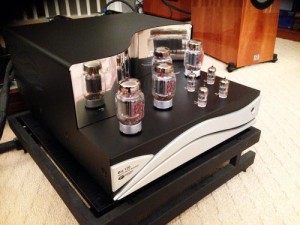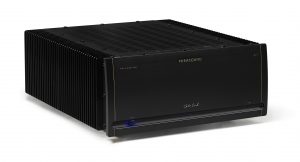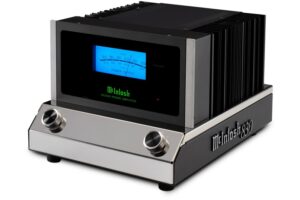I am so excited about this amplifier I don't know where to start. First and foremost is its surprising performance. Secondly is the price. For something so small and inexpensive, it seems only natural that expectation bias rears its ugly head. But that would be doing anyone with even a passing interest for this amplifier a disservice. But I know better. Having had experience with NSMT's amplifier offerings in the past, I didn't take this small, unassuming amplifier lightly. But I am getting ahead of myself.
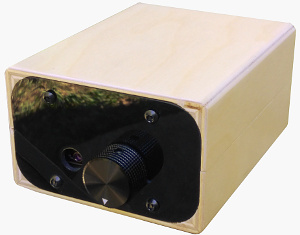
The product in question is the Model A100 amplifier from NSMT Loudspeakers. I recently reviewed their Model M100 loudspeakers. After seeing it on their website, I expressed interest in it to owner Earl Ricketts. Soon enough it was in my system. I am no stranger to NSMT's amplifier offerings. I have reviewed their Lepai modified amp sometime back. That little thing was a real firecracker. It packed a huge bit of performance in a very small package. In fact I bought two of them, one for me and one for a friend.
"The A100 is a modified 100-watts per channel stereo amplifier featuring the TPA 3116 chipset with dual code technology for high efficiency, low heat and accuracy." NSMT says, "We modified the amplifier to improve its bass performance, the definition of its soundstage, its dynamic punch, and to improve its high frequency detail and its musicality." This is what NSMT did to their last amplifier offering, the Lepai amplifier to great effect. I reviewed that amplifier too and at the time compared it to a stock Lepai and it was no contest. The NSMT Lepai came with a 2V or 5V power supply option. The 5V P/S showed a noticeable improvement in performance. The A100 comes standard with a switch mode 24volt/ 5V AC to DC power supply. A choice of Baltic Burch or Black casing is offered. I was sent the Black version. The front houses a single knob for turning on the amp and volume control. There is also a 3.5 input jack for connecting sources. On the rear a single pair of RCA jacks for input, two pairs of nice, knurled, gold plated speaker outs and the power supply input. Altogether this amplifier is very cleanly built, very nice looking and solidly put together.
There are other chip amp offerings on the market, names such as Audioengine, SMSL, Nobsound, Topping, and the big dog, TBI Millenia. These amplifiers come in various configurations which include USB DAC's, headphone amps, Bluetooth capability, or any combination thereof. With the exception of the TBI, these amplifiers' performance seemed geared for desktop use. In fact one of the two Topping amps I own is put to just such use. My Topping TP 30 with its TP2024L chip has a USB/DAC and headphone amp built in which works perfect for my desktop. The other Topping, a TP20MK2, which is a straight amplifier and uses a Tripath TA2020 chip, is used for fun. I put it in my system for the fun of it as I do my NSMT Lepai. In fact this is a good place to start the performance comparisons.
For this review I simply hooked up an amplifier to my Marantz PM15S1 used in preamplifier mode. That way I had all of the Marantz' inputs ready for use including its built in MM phono section. I also ran the A100 straight in to my Peachwood DACKIT which has USB, Coaxial and optical inputs. It is hooked up to the excellent Sophia Electric Magik Box. This pre-preamplifier makes transitioning from analog to digital much easier on the ears. Before I got to the meat of the review, I couldn't resist comparing the little A100 amp to every amplifier I had in house. I started off with the Topping TP20MK2.
The TP20 MK2 sounds quick, clean with good dynamics. It is not what you would call full and rich but it is not threadbare or bright. But it does sound smooth. On the Reference Recordings Tutti Sampler the violins could be fuller and richer but they are violins after all. Compared to the other amps here the TP20 MK2 made the violin section sound a tad steely and slightly cold. I felt that track 4, The Firebird Berceuse and Finale the violin section could have used a little more emotion, fullness and richness. Although I do admit this recording and selection could tax an amplifier of much higher pedigree. The Topping made a passing grade and pleasurable music but nothing I could live with in a high end system in the long run especially knowing there are much better performing amplifiers out there at not too much more than the Topping's price.
Next up was the NSMT Lepai TA 2020 chip amp; tone controls and a nice modification from NSMT and company and you are ready to go. Immediately there was an easily noticeably drop in performance. The Lepai with the 2 amp power supply sounded thinner in the vocals and dynamics. The soundstage was slightly smaller. But slap in the 5 amp power supply and you immediately notice a boost in performance. The power supply seems critical for the performance for these chip amps. Although I didn't hear it with the Topping TP20MK2, I can see why some folks call the sound of the TA2020 chip tube like because I hear a nice slightly warm tone to the music with this amp. There is also a slightly warmish timber but dynamics are quick, and the top end is clean and extended. The soundstage is dimensional but slightly less transparent than the better amps.
Are we having fun yet? So let's put the Marantz back in integrated mode and compare it to the A100. Immediately noticeable was that the Marantz did smooth the music out and sounded slightly less clinical. Inner detail was there in fact more so than with the A100. But the Marantz was definitely the more laid back sounding amplifier. It was also more harmonically rich with smoother sounding textures. This was evident with all music but especially the Tutti sampler. All of those orchestral tracks sounded more naturally powerful, relaxed and effortless through the 60 watt Marantz. The Marantz sounded more spacious in regards to ambiance and soundstage with more solid images on the CD from Mickey Hart, Planet Drum. This was especially noticed on track 5, "Jewe". The vocals on this track sounded very natural and had a real presence in the soundstage. The Marantz was also more revealing of upstream equipment. Of course we are talking about an amp that would cost over $3000 including TOC modifications. It has fared very well with costlier and more sophisticated competition. One thing though, I had to significantly turn up the gain on the Marantz to reach the same volume levels as when the A100 was in the system. One volume increase went from -30.0 to -23.5 to match levels.
Since we are testing with wild abandon, why not throw the Margules U280SE tube amp in. Yes quad KT-88s and 12AU7s, what can one say. Little chip amps have been accused of tube sound, so let's see. Immediately noticeable was the quality of spaciousness of tubes. There was a depth of stage and airiness unmatched by any amp in my stable. Of course with the tubes, the trailing edge of dynamics and the decay in the music wasn't as abrupt. In other words, the dynamics in the music took its time trailing off. This amplifier was even a tad more relaxed than my Marantz. Level matching was not an issue as with the Marantz. I think tubes are tubes and chips are chips and never the two shall meet.
But wait. We are comparing a $149 amplifier to several that costs many, many times more than that. Either I lost my hearing or Julian Hirsch and Peter Aczel were right. What was it that was said that all competently designed amplifiers are indistinguishable in sound quality if all levels are matched properly during the comparisons? Or something like that. I heard the same thing about tube verses solid-state amplifiers before too. But I just gave my subjective opinion stating that I could hear the differences between these amplifiers. The small size of the A100 fools one into thinking it is a flea watt amp but it is not. I do feel strongly however that if you are reviewing a component as small in stature as the A100 you have to give it a fighting chance. I have no hard to drive speakers with wildly varying impedance loads. A speaker with 95dB efficient such as my Tonian Labs TL-D1's works great with the A100. My Fritz Morels with their 86dB also did the trick. I have found that the Fritz don't do as well with a 10-watt amp as do the Tonians. But here with the A100's 100 watt output, they did just fine. High efficient speakers are what I use, but they are not needed with this amp to get quite a bit of volume out of it. Another thing to consider mandatory for a review like this is to use sensible speaker cables and interconnects. How many times have you read about a reviewer trying to stick an unwieldy, stiff, horrendously huge terminated pair of spade lugged useless audiophile cables to a micro amplifier and complain about it? Please!
Personally I do feel that amplifiers sound different. But how loud do you want those speakers to go? How big is the room and are you listening to Metal or Smooth Jazz? What is the efficiency of the speakers you are planning to drive with that amp? I am sure those are just some of the determining factors that contribute to the differences in the sound of amplifiers. I am also a firm believer of modifications. To me changing the right parts out in the right places among other things in an amplifier can really up the performance. It definitely has with the NSMT amplifiers. And it definitely has with my Marantz gear. I have had some pretty nice amplifiers in my system over the years, some considerably more expensive than my amp. I have not had the urge to change.
So how did the little NSMT A100 chip amplifier sound? Cold, new and straight out of the box it sounded a tad less transparent and a tad thicker sounding in the midrange than my regular amplifier. But that was cold and new and straight out of the box. But also in this condition the snare drum on the Jack Johnson CD, Sleep Through the Static, specifically track 8, "What you thought You Need", sounded fleshed out and very dimensional in the stage. This was very promising.
Let's fast forward past some run in time and the little A100 sounded cleaner in the midrange and more transparent. The more I listened the more its true character came out. It sounded clear, clean and detailed with an open soundstage. The sound and images coming from this amplifier do not have a hazy bone in its body. There is no veiling. On the Reference Recordings Tutti Orchestral Sampler there was fullness and authority to the orchestra. There was spaciousness, width and depth to the excellent soundstage and imaging this amp brought out of this very fine recording. I was surprised. Separation of background instruments is pretty good. Inner detail is very good but not as transparent as the amps mentioned above. The A100 sounds slightly cooler but still musical. Yet it never sounds sterile. Vocals and instruments for the most part have a natural tone. This was readily apparent on the Jack Johnson CDs that I played. The top end sounds polished and clean. Johnson's acoustic guitar had very good body and tone. Hey, Jack Johnson helped me through the M100 review.
There were several areas where the performance of the A100 was slightly different than with the other amplifiers. The A100 tracks dynamics with a tight grip. But it doesn't seem to let them go as easily or as naturally as the Marantz or Margules. Those amps track the dynamic shadings of notes better which make them sound as if they are a little more relaxed sounding. The A100 on the other hand always seems to sound a slightly bit tight and immediate and not as relaxed and natural in this area. It is not a deal breaker. But it is noticeable in long term listening and again compared to much more expensive electronics. Inner detail is also very good but not as transparent as my reference amplifiers. I noticed on track 5 "Jewe" from the Mickey Hart CD, the vocals from the group of men singing forcefully came out a little less cleanly than my reference amp, but just slightly. Another difference that long term listening brought out was in the area of vocals. I hate to resort to fluffy audiophile phrasing here but that seems the best way to describe it. Vocals seem to have a very slight patina of glare to them. This varies from recording to recording and it is slight. At first I thought it was due to the way this amplifier's very capable way of revealing the differences between recordings, both audio and video. I did try the A100 with and without the Marantz preamplifier hooked up to it. But this slight anomaly did show up in either case. In fact the A100 showed a slight increase in performance with the DACIT or my SA15S2 SACD player hooked directly to it. The slight glare and dynamic grip mentioned above was slightly curtailed in this configuration. Although slight, these artifacts were still there. In fact I had the most fun listening to music and watching movies with this amplifier hooked directly to my DAC. It sounded more immediate, direct, and dynamic. If it had a few more inputs on it I wouldn't need a preamplifier. All that would be missing would be a remote control. The one thing this amp has over "conventional" solid state and especially tube amplifiers is heat. There is none! You can leave this amp on 24/7 and walk away with confidence that you are not heating up your little transistors or wasting away your precious NOS tubes. Ha!
I have been merciless to the little NSMT A100 amplifier during this review. I compared it to amplifiers quite a bit more costly and put it in a system a bit out of its price range. I also listened to this amp through 99 cents a foot speaker wire and a $300 DAC. I wanted to see if I could push this little amplifier to its limits within the confines of my system no matter what was hooked up to it. To say the A100 performed admirably in these situations would be a gross understatement. This little amplifier from North Carolina performed way above and beyond what is expected in a $149 amplifier. The older I get the less tolerable I have become of balderdash, high prices and hype in this hobby. If this hobby is truly about the music the gear wouldn't matter. It's not. It is about the gear. Let's not fool ourselves. The A100 dispels the myth of high price vs performance better than a lot of gear that has passed my way in a very long time. It is not a perfect amplifier but show me one that is no matter the price. What's more and a very important point about this amplifier is as with its predecessor, the NSMT Lepai, this amplifier is loads of fun to play with and listen to for a price that is too small to argue about. Let go audiophiles, let go and have fun!
A100 amplifier
Retail: $149.95
NSMT Loudspeakers
919.244.8777




